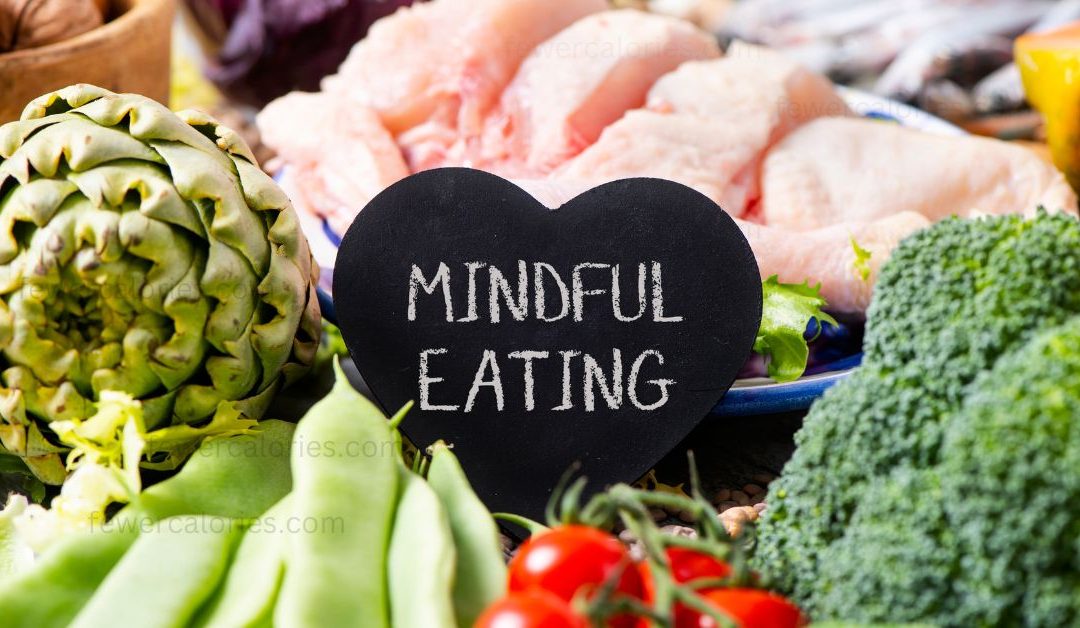If you’re looking to eat healthier and shed some extra pounds, then it’s time to discover the wonders of mindful eating. It’s not about following strict diets or counting calories; instead, it’s a practice that encourages you to have a peaceful relationship with food and appreciate every bite. By being fully present and aware during meals, you can cultivate a deeper connection with your body’s hunger and fullness cues, leading to better portion control and improved overall well-being. So, grab a seat, prepare to savor each mouthful, and let this beginner’s guide to mindful eating be your compass on this nourishing journey.
What is Mindful Eating?
Mindful eating is a practice that involves paying full attention to the experience of eating, both internally and externally. It is about being present in the moment, fully engaging with your senses, and listening to your body’s hunger and fullness cues. Mindful eating is not a diet or a strict set of rules, but rather a way of approaching food and eating that promotes a healthy relationship with food and supports overall well-being.
Definition of Mindful Eating
Mindful eating can be defined as the intentional, non-judgmental awareness of the physical and emotional sensations experienced while eating. It involves being fully present with your food, savoring each bite, and observing the thoughts, feelings, and sensations that arise during the eating process. It is about developing a deeper understanding of your body’s needs and using that knowledge to guide your eating choices.
The Benefits of Mindful Eating
Practicing mindful eating offers numerous benefits for both physical and mental well-being. By tuning into your body’s hunger and fullness signals, mindful eating can help you maintain a healthy weight by preventing overeating. It can also improve digestion and reduce digestive issues such as bloating and discomfort.
Mindful eating promotes a greater sense of satisfaction and enjoyment from food, as you are fully present and engaged with the eating experience. It can enhance your appreciation for the flavors, textures, and aromas of food, leading to a more pleasurable dining experience.
Additionally, mindful eating can help you build a healthier relationship with food by reducing emotional and stress eating. By bringing awareness to the triggers and emotions that drive emotional eating, you can develop alternative coping strategies and cultivate self-compassion.
How Mindful Eating Can Help with Weight Loss
While mindful eating is not a weight loss program in itself, it can be a helpful tool for those looking to lose weight. By practicing mindful eating, you can become more attuned to your body’s hunger and fullness cues, which can prevent overeating and support portion control. Mindful eating also encourages slowing down and savoring each bite, which can lead to greater satisfaction and potentially reduce the temptation to reach for more food.
Additionally, by fostering a healthier relationship with food and addressing emotional and stress eating triggers, mindful eating can reduce reliance on food as a coping mechanism. This can support sustainable, long-term weight loss by helping individuals develop healthier and more balanced ways of dealing with emotions and stress.
The Principles of Mindful Eating
Eating with Awareness
Eating with awareness is the foundation of mindful eating. It involves bringing your full attention to the act of eating, free from distractions such as screens, work, or multitasking. By being fully present with your food, you can savor the flavors, textures, and smells, and become more attuned to your body’s hunger and fullness signals.
Eating with Intention
Eating with intention means making deliberate choices about what and how you eat. It involves considering your body’s nutritional needs and choosing foods that nourish and support your well-being. Eating with intention also means being aware of the impact that your food choices have on the environment and making choices that align with your values.
Eating without Judgment
Eating without judgment involves cultivating a non-judgmental attitude towards food and your eating experiences. It means letting go of the “good” or “bad” labels often associated with food and embracing a mindset of self-compassion and acceptance. By releasing judgment, you can develop a healthier relationship with food and yourself.
How to Practice Mindful Eating
Create a Peaceful Eating Environment
Creating a peaceful eating environment can enhance your mindful eating practice. Find a quiet and comfortable space free from distractions where you can focus solely on your meal. Set the table with care, using utensils and dishes that bring you joy. Eliminate any clutter or distractions that might interfere with your ability to be fully present and engaged with your food.
Slow Down and Savor Each Bite
One of the key aspects of mindful eating is slowing down and savoring each bite. Take the time to chew your food thoroughly and fully appreciate the flavors, textures, and sensations in your mouth. Put your utensils down between bites and engage your senses in the experience of eating. By eating slowly, you give your body a chance to send signals of fullness, helping you to avoid overeating.
Pay Attention to Physical Hunger and Fullness
Pay attention to your body’s physical hunger and fullness signals. Before you start eating, take a moment to check in with your body and assess how hungry you are on a scale from 1 to 10. During the meal, pause occasionally to tune in and assess your fullness level. Eat until you are satisfied but not overly full. By becoming more attuned to your body’s signals, you can develop a healthier relationship with food and avoid both overeating and undereating.
Engage Your Senses
Engage your senses in the eating experience. Notice the colors, smells, and textures of your food. Take the time to really taste each bite and appreciate the flavors. Use all of your senses to fully engage with the experience of eating, bringing a sense of mindfulness and presence to the meal.
Focus on the Present Moment
During the meal, bring your attention fully to the present moment. Let go of any distractions or worries and focus solely on your food and the act of eating. Take this time as an opportunity to slow down, relax, and savor the meal. By being fully present, you can enhance your enjoyment of the food and cultivate a sense of gratitude for the nourishment it provides.
Practice Gratitude
Practice gratitude for the food you are eating. Take a moment before your meal to express gratitude for the farmers, the chefs, and the hands that brought the food to your plate. Consider the journey that the food has taken to reach you, from seed to harvest to your table. Cultivating a sense of gratitude can deepen your connection to your food and promote a mindset of appreciation and abundance.

Overcoming Challenges in Mindful Eating
Identifying Emotional and Stress Eating Triggers
Emotional and stress eating can be major challenges when it comes to mindful eating. It’s important to identify the triggers that lead you to turn to food for emotional comfort or stress relief. These triggers can be anything from work deadlines to relationship issues or even boredom. By becoming aware of your emotional and stress-eating triggers, you can develop alternative coping strategies and find healthier ways to address those underlying emotions.
Finding Alternatives to Emotional Eating
Once you have identified your emotional eating triggers, it’s important to find alternatives to turning to food for comfort. This could involve engaging in activities that bring you joy and fulfillment, such as going for a walk, practicing mindfulness meditation, writing in a journal, or talking to a trusted friend or therapist. By finding alternative ways to address your emotions, you can break the cycle of emotional eating and cultivate a healthier relationship with food.
Dealing with Food Cravings
Food cravings are another common challenge in mindful eating. When a craving hits, take a moment to pause and check in with yourself. Ask yourself if you are truly physically hungry or if the craving is driven by emotions or environmental cues. If the craving is not connected to physical hunger, try to identify the underlying emotions or triggers and address them directly. If the craving persists, it’s okay to indulge in a small portion of the desired food mindfully, savoring each bite and enjoying the experience fully.
Cultivating Self-Compassion
Cultivating self-compassion is crucial in overcoming challenges in mindful eating. It’s important to let go of self-criticism and judgment when you make choices that are not in alignment with your intentions. Remember that mindful eating is a practice, and it’s natural to have setbacks or moments where you are less mindful. Treat yourself with kindness and understanding, and use those moments as opportunities to learn and grow in your mindful eating journey.
Mindful Eating and Portion Control
Understanding Portion Sizes
Understanding portion sizes is essential for practicing mindful eating and supporting weight management. Many people are unaware of what a portion size should look like, leading to overeating. Educate yourself on recommended portion sizes for different food groups and train yourself to serve appropriate portions. Use measuring cups, scales, or visual cues to help you estimate the right amount of food.
Using Visual Cues for Portion Control
Visual cues can be helpful for controlling portion sizes. For example, visualize your plate divided into sections: half of the plate should be filled with vegetables, one-quarter with lean protein, and one-quarter with whole grains or starchy vegetables. This visual guide can help you create balanced meals and control portion sizes more effectively. Alternatively, you can use smaller plates and bowls to create the illusion of a fuller plate with smaller portions.
Listening to Your Body’s Hunger and Fullness Signals
Mindful eating emphasizes listening to your body’s hunger and fullness signals to guide your eating. Before reaching for seconds or eating more than you need, pause and check in with your body. Assess if you are still physically hungry or if you are eating out of habit, boredom, or emotional reasons. By connecting with your body’s signals, you can avoid overeating and support portion control.
Mindful Eating and Meal Planning
Planning Balanced and Nutritious Meals
Meal planning is an effective strategy for practicing mindful eating. By planning your meals in advance, you can ensure that they are balanced and include a variety of nutrients. When creating your meal plan, focus on incorporating whole foods such as fruits, vegetables, whole grains, lean proteins, and healthy fats. Aim for a colorful and diverse plate to maximize the nutritional benefits of your meals.
Meal Prepping for Success
Meal prepping can also support mindful eating by ensuring that healthy meals are readily available. Set aside time each week to prepare a variety of ingredients, such as roasted vegetables, cooked grains, and lean proteins. Store them in portioned containers for easy grab-and-go meals throughout the week. Having pre-prepared meals and snacks on hand reduces the temptation to reach for less healthy options when hunger strikes.
Mindfulness and Physical Activity
Combining Mindful Eating with Exercise
Incorporating mindfulness into your physical activity can complement your mindful eating practice. During exercise, pay attention to how your body feels, the sensations of movement, and the rhythm of your breath. By staying present and engaged with your workout, you can enhance the mind-body connection and experience a greater sense of satisfaction and enjoyment.
Finding Joy in Movement
Rather than viewing exercise as a chore or a means to burn calories, cultivate a mindset of finding joy in movement. Choose activities that you genuinely enjoy and that align with your interests and preferences. Whether it’s dancing, hiking, yoga, or playing a sport, finding joy in movement can enhance your overall well-being and support a positive relationship with both food and exercise.
Mindful Eating as a Lifestyle
Incorporating Mindful Eating into Everyday Life
Mindful eating is not something that is practiced only during specific mealtimes. It can be integrated into your everyday life by applying the principles of mindful eating to all eating occasions, including snacks and meals on the go. Whether you’re enjoying a quick snack or sitting down for a formal dinner, bring awareness, intention, and non-judgment to the experience.
Developing a Healthy Relationship with Food
Mindful eating is a powerful tool for developing a healthy relationship with food. It involves letting go of restrictive diets, food rules, and the notion of “good” or “bad” foods. Instead, focus on nourishing your body with a variety of foods that bring you joy and support your well-being. Cultivate a mindset of self-compassion and honor your body’s unique needs and preferences.
Maintaining Long-Term Results
Mindful eating is not a quick fix or a temporary solution. It is a lifelong practice that supports sustainable, long-term results. As you continue to practice mindful eating, you will cultivate a deeper understanding of your body’s needs and become more attuned to its signals. This awareness will guide your food choices and support your overall health and well-being in the long run.

Common Mindful Eating Mistakes to Avoid
Forcing Yourself to Eat Foods You Dislike
One common mistake in mindful eating is forcing yourself to eat foods you dislike or find unappealing, simply because they are deemed “healthy” or “good for you.” Mindful eating is about nourishing your body with foods that bring you pleasure and satisfaction. Instead of trying to force yourself to eat foods you don’t enjoy, focus on finding healthier alternatives that you genuinely love and look forward to eating.
Using Mindful Eating as a Strict Diet
Mindful eating is not a strict diet or a rigid set of rules to follow. It is a flexible and adaptable approach to food and eating. Avoid turning mindful eating into another form of restriction or deprivation. Instead, embrace the principles of mindful eating as a way to foster a healthier relationship with food and support your overall well-being.
Not Seeking Professional Guidance When Needed
While mindful eating can be practiced by anyone, seeking professional guidance can be beneficial, especially if you have specific dietary or health concerns. Consider consulting a registered dietitian or a mindful eating practitioner who can provide personalized guidance and support. They can help you navigate through any challenges, answer your questions, and tailor mindful eating to your individual needs.
Resources for Mindful Eating Support
Books and Publications
There are numerous books and publications available that delve into the topic of mindful eating. Some recommended resources include “The Joy of Half a Cookie” by Jean Kristeller, “Savor” by Thich Nhat Hanh and Dr. Lilian Cheung, and “Intuitive Eating” by Evelyn Tribole and Elyse Resch. These books offer valuable insights, practical tips, and guidance for incorporating mindful eating into your life.
Online Communities and Courses
Online communities and courses can provide a supportive and educational environment for practicing mindful eating. Websites such as mindful.org offer resources, articles, and forums where you can connect with like-minded individuals and share your mindful eating journey. Additionally, there are online courses and programs specifically focused on mindful eating, which can provide structured guidance and support.
Finding a Mindful Eating Practitioner
If you want more personalized guidance and support in your mindful eating journey, consider finding a mindful eating practitioner. These professionals have specialized training in mindful eating and can provide individualized support tailored to your needs. They can help you overcome challenges, address specific concerns, and guide you toward a healthier relationship with food.
In conclusion, mindful eating is a powerful practice that can support your journey towards healthier eating habits and weight loss. By being present, intentional, and non-judgmental with your food and eating experiences, you can develop a deeper understanding of your body’s needs and cultivate a healthy relationship with food. Remember that mindful eating is a lifelong practice, so be patient, and kind to yourself, and enjoy the journey.
© 2024 by fewercalories.com. All rights reserved. No part of this document may be reproduced or transmitted in any form or by any means, electronic, mechanical, photocopying, recording, or otherwise, without prior written permission of fewercalories.com.






